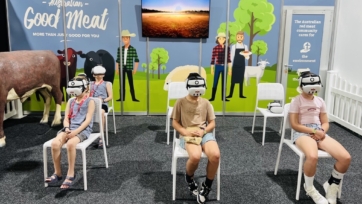Could you own the Financial Literacy space?
Could you own the Financial Literacy space?
From the start of 2021, big banks have been banned from providing classroom-based financial literacy programs to primary students in both Victoria and Queensland, with the other states and territories expected to follow. When paired with the coming changes to the maths curriculum around the concept of money, this could open up the financial literacy education space for a new owner. Read on to find out what’s happening and if you could fill the hole in the pocket of schools left by the absence of financial literacy programs.
What’s Happening?
- A review run by the Australian Securities and Investments Commission (ASIC) into school financial literacy programs in 2019 revealed some specific trends, such as children as young as eight being introduced to the concept of credit cards and young bankers being ‘recruited’ with challenges and prizes
- The Australian Curriculum review has suggested reorganising the outcomes relating to money and coins in early primary education, potentially cutting some content due to its irrelevance
- The National Consumer and Financial Literacy Framework, while not compulsory, is a useful resource guiding teachers on how to embed financial literacy skills into their curriculum. Developed by ASIC in partnership with the Australian Curriculum, the framework gives guidance to teachers on how consumer and financial capabilities may be structured to support a progression of learning from Foundation to Year 10.
- As we move towards a ‘cashless’ society, students need more support with how to manage their money when they can no longer receive it and hand it over
- With the rise in “buy not, pay later” platforms and with credit card debt at an all time high, students need more help than ever before to manage their funds
What does this mean for me?
- Existing resources and programs on money skills will quickly become outdated or even banned in schools as more states and territories follow Victoria and Queensland. This leaves a huge deficit in financial literacy support resources for both teachers and students
- Financial literacy is about knowing how to manage your money appropriately. Resources are needed for teaching students about the implications of a ‘cashless’ society, taxation, superannuation, what is credit debt and “buy now, pay later” and all the things to know about making money in the modern world, for example, entrepreneurship and the ‘gig’ economy
- Enterprise challenges (think Shark Tank) are great for encouraging financial management skills as well as necessary skills for the future workforce. Link these together to ‘brand’ your financial literacy resources and solve industry problems in real time!
Next Steps?
- Audit your existing resources to find a niche for financial literacy
- Update your resources to better appeal to teachers and students
Don’t have the time or expertise? Contact Kimberlin Education and let us help you ensure your resources are relevant in all classrooms today and will be picked up and enjoyed by teachers and students!




